ARKHAM HORROR (3rd Edition) is a cooperative board game involving investigation and battles against abominable monsters. The game was created by Fantasy Flight Games. Able to be played by 1-6 players, it takes participants to the 1920s to the city of Arkham where an evil aura settles and several secret cults are taking place, Based on the literary work of H.P. Lovecraft the game brings a noir atmosphere and typical of the writer. Each player will take on the role of an investigator and will have to unravel what is happening through clues scattered around the city... It turns out that during his journey several creatures got in his way and the mystery can be much more terrifying than you can imagine...
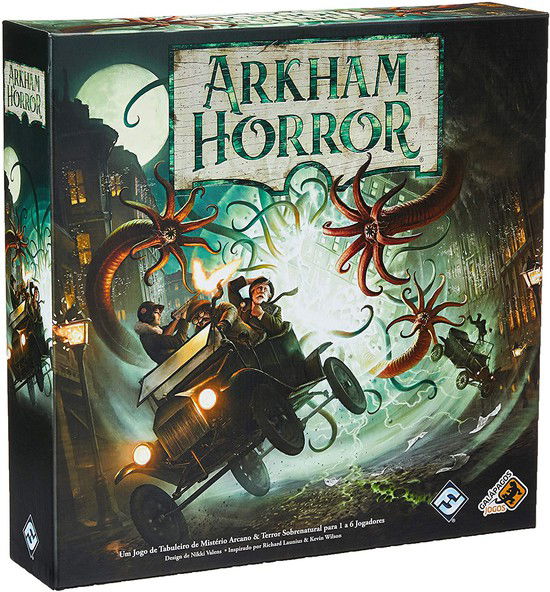
STARTING A MATCH
SCENERY
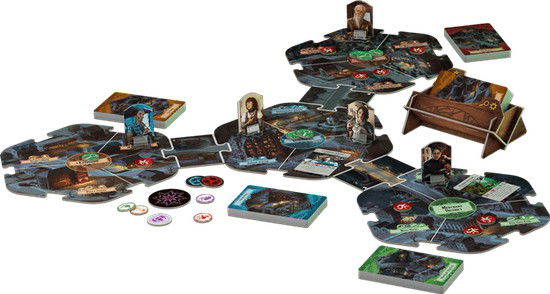
When starting a new game, you must choose (or draw) a Scenario. In the scenario, several things will be defined to configure the start of the game, such as the layout of the board, the monsters and the tracks, in addition to the initial position of the investigators and defining which Ancient One the players will be facing. Each scenario details exactly how to set up the beginning of the game.
DECK ASSEMBLY

DECK OF ENCOUNTERS These decks are divided between the street deck and the decks of each neighborhood (which are arranged separately). There will be the types of encounters investigators will encounter when investigating each location.
EVENT DECK The event deck is defined by the Scenario being played. This will help you find more clues within the city.
MONST DECK The monster deck is also defined by the Scenario being played. There you will have the monsters available in that game and that will be included every time a monster appears in the city.
DECK OF HEADLINES Shuffle the headline cards and deal 13 of them in a facedown deck. These 13 cards are the deck of headlines that will eventually guide and inform investigators of world events throughout the game. Return the remaining headline cards to the game box.
DISPLAY DECK Separately shuffle the item, ally, and spell cards to form three decks, and place them in the play area. Keep the special cards and condition cards in order, and set them aside (see the sidebar for more information). Take the top five cards from the item deck and place them in a face-up row next to the item deck. This row of cards is called a showcase. The items
from the showcase can be earned or acquired from in-game encounters. Some places, such
like the warehouse, allow you to spend money to acquire items from the showcase.
GAME SHEET
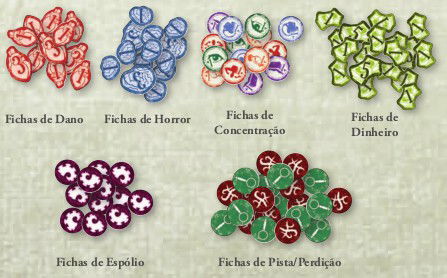
MYTH CHIPS Use an opaque container (a bag, an opaque bowl, or even the game box itself) that makes it impossible to see the contents inside. The myth chips will be placed there and then randomly drawn. Take Mythos Tokens in the quantities indicated on the back of the Scenario Token and place them in the Mythos Repository. Return the remaining mythos tokens to the game box.
DAMAGE SHEET Counts how much damage the investigator has already been inflicted.
HORROR SHEET Counts how much horror the investigator has already been afflicted.
CONCENTRATION SHEET Increases the investigator's ability by some attribute.
CASH SHEET Counts how much money the investigator has.
LOOT SHEET Represent the remains of defeated monsters, ritual components left behind, or other curiosities found by investigators.
TRACK/DOOM FORM Can be used to help reach the final goal of the Scenario and assist in several other tasks during the game.
RESEARCHERS' CHOICE

Each investigator has a deep and diverse story, their health and sanity are specific, in addition to different skills, attributes and accessories, making each of these have a different gameplay and role in the game. So you should read what the initial items and spells will be to be able to configure your investigator.
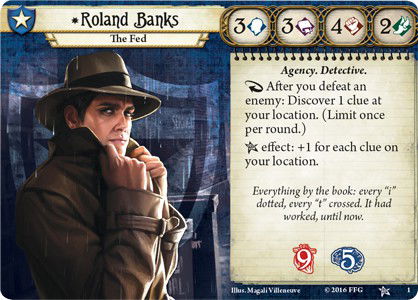
It is always interesting that players can define their investigators with the purpose that their skills and attributes complement each other and are able to cooperate with each other.
STEPS OF THE ROUND
ARKHAM HORROR consists of a series of rounds; and each round has four phases:
1. Action Phase — In the action phase, each investigator can take up to two actions on his turn, including:
Analyze: When you perform an analyze action, you test observation. For each success rolled, you can analyze one clue.
Attack: When you perform an attack action, you choose a monster in its space, engage it, and test strength. For each success rolled, you deal one damage to the monster. You can attack a monster that is engaged to another investigator in its space. If you do, you engage the monster and it is no longer engaged with the other investigator. Each monster has an attack modifier that affects the number of dice rolled on the Strength check. If you are engaged with multiple monsters, you can only attack one of them, and you apply only the attack modifier of the monster being attacked. If the monster you're attacking is exhausted, you don't engage it. The monster remains exhausted, and you deal damage as usual. After defeating a monster as part of an attack action, if the monster has a loot icon, you receive loot.
Gather Resources: When you perform a resource gathering action, you receive a dollar.
Component: These are actions specific to each investigator. You can take the component action only if it is on your investigator sheet or on one of the resources you own. Each component action is considered independent of other component actions. In a round, you cannot perform the same component action twice.
Concentrate: When you perform a concentrate action, you focus on one skill of your choice. After performing a concentrate action, if you have concentration tokens beyond your concentration limit, you must discard one of your concentration tokens.
Defend: When you perform a defend action, you test knowledge. For each success scored, you may remove a bane from your space and return it to the token bank. If you remove two or more banes as part of a defend action, you gain loot.
Evade: When you perform an evade action, you roll Observation. For each success rolled, you disengage one monster of your choice and exhaust it. If you disengage from all the monsters you were engaged to, you can take an extra action. Each monster has an evasion modifier that affects the number of dice rolled on the observation check. If you are engaged with multiple monsters, you only use the worst modifier among the monsters you are engaged with. You can only perform the evade action if you are engaged with one or more monsters.
Move: When you perform a move action, you move your investigator marker up to two spaces. You can spend up to two dollars to move one extra space per dollar spent. If you move into a space with a prepared monster, it immediately engages you and your movement ends.
Trade: When you perform the trade action, you trade any number of allies, items, spells, currency tokens, clues, and loot with one or more of the other investigators in your space. You can trade with an investigator even if he is engaged with a monster. Items, allies, and spells that are used by an investigator on his turn and then passed to another investigator in the same round cannot be used by the investigator who received them until the start of the next action phase.
two. Monsters Phase — In the monsters phase, the monsters are activated (it appears on the board activating possible abilities and moving it on the board and being able to engage with investigators), attack the investigators they are engaged with, or become prepared if they are exhausted .
3. Encounter Phase — In the encounter phase, investigators take turns resolving encounters. On your turn, you draw and resolve an encounter card that matches your space. Investigators take their turns in any order they prefer. After you have completed your turn, flip your activation token to the active side. If one or more monsters are engaged with you, you do not resolve an encounter. Instead, just flip your activation token to the active side. Each meeting tells a brief story about what the investigator experiences on site.
4. Mythos Phase — In the mythos phase, investigators take turns taking tokens from the mythos repository. On your turn,
you take two tokens from the myth repository, one at a time, and resolve their effects, which can cause clues, monsters, and doom to spawn in Arkham. The myth sheets are as follows:
Spread Doom: When you take the Spread Doom token, you must spread Doom once.
Spawn Monster: When you take the spawn monster token, you must spawn a monster.
Spawn Clue: When you take the spawn clue token, you must spawn a clue.
* Read Headline: When you take the read headline token, you must draw and resolve the top card from the headline deck.
Blast Portals: When you take the Blast Portal token, place a bane on each space of the portal.
neighborhood that corresponds to the first card of the event deck. Take that card and shuffle it along with the event discard pile, and place them under the event deck.
Reckoning: When you take the reckoning token, the investigators must resolve the reckoning effects on the scenario sheet, on all cards in the codex, and on any cards the investigators have. Reckoning effects are a type of mechanical effect marked by a red reckoning icon surrounded by a red border. Reckoning effects are resolved only when the Mythos token
reckoning is taken from the mythos repository. Investigators choose the order in which reckoning effects resolve.
Blank: When picking up the blank tile, there is no effect.
After the myth phase, the game continues with a new round, starting with the action phase.
PROEFFICIENCY TESTS
A proficiency test (or “test”) represents a physical, mental, or social challenge to be overcome. Cards can instruct you to resolve checks explicitly or by just showing a proficiency icon in parentheses.
To resolve a test, roll a number of dice equal to the proficiency value shown on your investigator sheet. This value can be modified up or down by various game effects or by a modifier next to the test declaration. Even if the modifier reduces your proficiency to zero, you still roll at least one die. Every five or six rolled is a success. If you roll at least one success, you pass the test. If you roll zero successes, you fail the check. The total number of successes is called the test result, which can be referred to by effects on the card.
After passing or failing a test, follow the instructions on the card to view the result. if
there is no matching result, the card has no further effect.
MODIFYING THE TESTS
Some components allow you to reroll or manipulate dice, or add successes directly to the test result. For example, you can spend a Clue or Concentration token to reroll a die. This occurs after the initial roll, but before determining your final result.
LATE
In a match, you can be late. When you fall behind, lay down your investigator token. At the start of your turn, in the next action phase, you lift your counter, but you can only take one action that turn.
ADDITIONAL RULES
ITEMS, ALLIES AND SPELLS

Throughout your encounters in Arkham, you will receive allies, spells, and items that will help you combat the evils of myth. When you receive one of these cards, draw a card from the corresponding deck.
If you are instructed to receive a card with a specific attribute (such as a “common item” or a “curiosity item”), reveal cards from the top of the deck until you reveal a card with the indicated attribute. Receive that card and shuffle the remaining revealed cards back into the deck.
The Showcase When you receive an item, instead of drawing it from the item deck, you can choose an item from the storefront that has the specified attribute (if any). After taking an item from the display, buy a new item to replace it. If you are instructed to acquire items from the display, you must spend an amount of money equal to the item's value (see sidebar) to get it.
Hands When resolving a test, you can use as many cards as you like that add up to two hand icons (see sidebar). For example, you can use a two-handed shotgun or a one-handed gun when attacking, but not both at the same time. There is no limit to the number of items you can carry.
Casting Spells Unlike allies and items, using spells has an associated cost. When using a spell's effect, you must first suffer horror equal to the number of horror icons on the spell card (see sidebar). You can spend loot instead of suffering horror, on a one-to-one basis.
Allocating Damage and Horror Some cards (usually from allies) have health and sanity values, just like investigators. When you take damage or horror, you can allocate it to one of your cards with health and sanity values by placing tokens on the card. You cannot allocate damage to a card that has no health value, nor can you allocate horror to a card with no sanity value. When an ally or other resource has damage greater than or equal to its health, or horror greater than or equal to its sanity, you must discard it. Sometimes you will take direct damage or direct horror. Direct damage and direct horror cannot be allocated to allies or items. You have to suffer them.
ANOMALIES
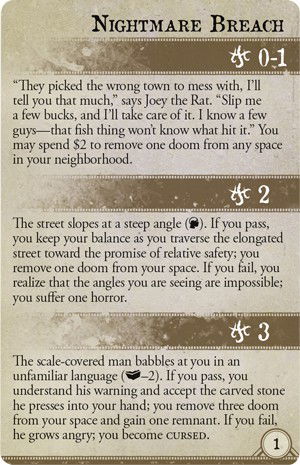
Anomalies are strange and terrifying events, such as the appearance of portals to other dimensions. They result from doom spreading out of control and are the first sign that you are in serious trouble!
Placing Anomaly Tokens When any space has three banes, place an anomaly token in the center area of the neighborhood tile. Likewise, if a neighborhood has a total of five dooms, place an anomaly in it. Do not place more than one anomaly token in the same vicinity.
Anomalies and Doom If a doom would be placed on any space on a neighborhood tile that already has an anomaly, it is placed on the scenario sheet instead, regardless of how much doom exists in the vicinity.
Removing Anomalies Both the defend action and anomaly encounters allow you to remove bane from your space. When you've removed all doom from a neighborhood, the anomaly in it stabilizes, and you can remove the anomaly token.
Anomaly Encounters On your turn in the encounter phase, if you are in a neighborhood with an anomaly, you must resolve an anomaly encounter instead of a normal neighborhood encounter (see sidebar). You draw the first card from the anomaly deck and resolve the section that corresponds to the amount of bane in your space.
PURPOSE OF THE GAME
The central objective of the game is to prevent a cult from evoking a portal to another dimension and bringing with it hideous creatures and ultimately an Ancient One (mythical creature, players will have to explore a city that can be divided into up to 5 regions (North Zone, East Zone, Center, Commercial District and Ribeira) looking for clues and accessories to reach their final objective, always keeping an eye on the amount of accumulated perdition so that they don't reach the limit...
VICTORY
There is no standard way to beat the game. You must advance through the cards in the codex (Scenario Sheet) in a positive way until one of them says you won. Winning the game often requires obtaining clues from event encounters, analyzing those clues, and spending clues from the scenario sheet to resolve the effects of cards in the codex.
DEFEAT
There is only one standard way to win the game, but there are multiple ways to lose if the cards in the codex progress negatively. The game usually ends in defeat due to excessive accumulation of doom on the board, as this causes doom to be put on the scenario sheet, which makes the cards in the codex progress negatively. Players also lose if all available investigators have retired, or have been defeated or devoured. If there are no more investigators available to the players, the game ends in defeat.
MORE INFORMATION
All Arkham Horror files like manual and game screenshots can be found here. The game already has the expansions Arkham Horror : Hora Final and Arkham Horror: Calada da Noite.

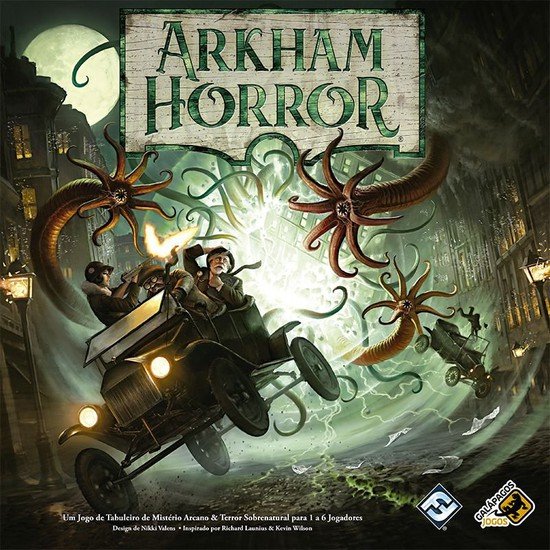






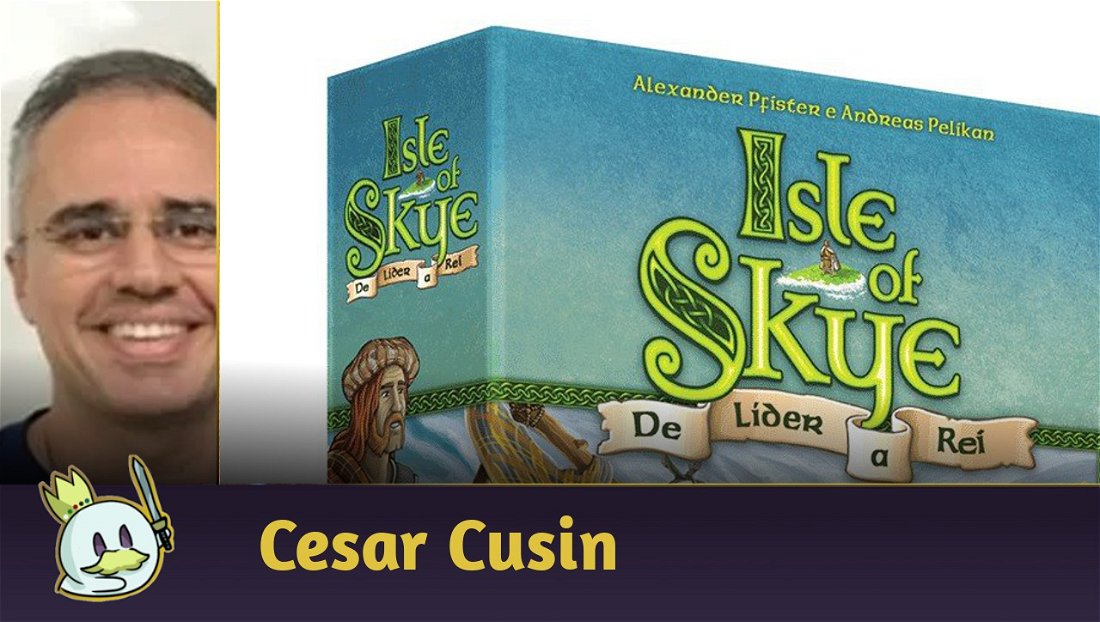
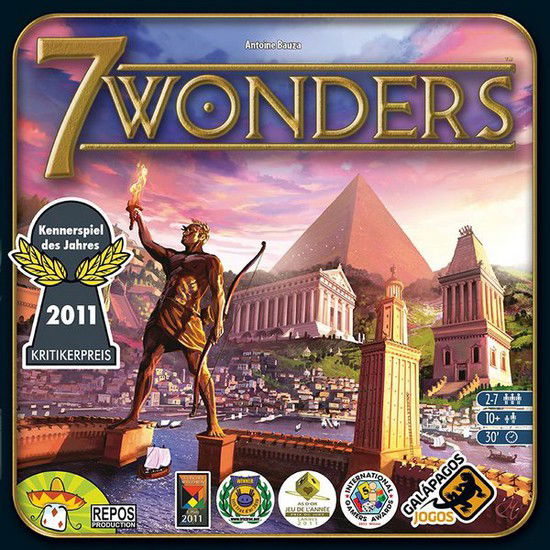



— 评论 0
, 反应 1
成为第一个发表评论的人